This article dives into how Differential Reinforcement of Other behavior (DRO) can really make a difference in child behavior through positive reinforcement techniques in Applied Behavior Analysis (ABA) therapy. Let’s explore this together!
It shares various examples of how DRO is implemented, showing just how effective it can be in reducing negative behaviors. Plus, it enhances social interactions and fosters emotional regulation, which ultimately improves the overall quality of life for children.
We’re here to help you every step of the way!
Transforming child behavior through effective strategies can be quite the journey—challenging yet incredibly rewarding! One standout tool in this process is Differential Reinforcement of Other Behaviors (DRO). This powerful approach, rooted in Applied Behavior Analysis (ABA) therapy, helps encourage positive actions while minimizing those pesky disruptive behaviors.
Imagine the possibilities! By diving into practical examples of DRO, caregivers and educators can truly unlock the potential for significant behavioral improvements in children, especially for those facing developmental challenges.
But here’s the big question: how can we tailor these strategies to meet the unique needs of each child? Together, we can ensure lasting change and emotional growth. Let’s explore this together!
At Rori Care, we embrace the power of ABA Therapy by integrating DRO examples aba as a core element of our approach. This approach focuses on encouraging kids to steer clear of negative behaviors during specific time frames, inspiring them to engage in more positive activities. Recent studies show that DRO examples aba are effective in reducing challenging behaviors, which allows clinicians to create a nurturing environment that fosters growth and development. For instance, imagine a young learner receiving praise every five minutes for staying quiet during reading time—this helps reinforce their focus and engagement.
The impact of DRO on young people's behavior is truly remarkable. Not only does it help reduce problematic actions, but it also nurtures emotional regulation and coping skills. Many case studies back this up, showing positive behavioral changes in youth who implement dro examples aba methods. One study even highlighted how children with autism improved their social interactions and learning outcomes in school through consistent DRO application.
By implementing DRO, Rori Care empowers families and clinicians to achieve meaningful results with clear, measurable goals to track progress. It's essential to maintain ongoing communication with families and caregivers for DRO strategies to work effectively. By equipping caregivers with ABA principles and techniques, we ensure that interventions are tailored to each child's unique needs, reinforcing our commitment to personalized care through data-informed strategies. This way, caregivers feel more prepared to support their children at home, complementing professional interventions and promoting consistency.
As we often say, "actions that receive rewards are more likely to occur again," which underscores the effectiveness of reinforcement strategies in shaping the therapeutic experience. Ultimately, by implementing DRO, we enhance the quality of life for children with autism. Let’s explore this together and see how we can make a difference!
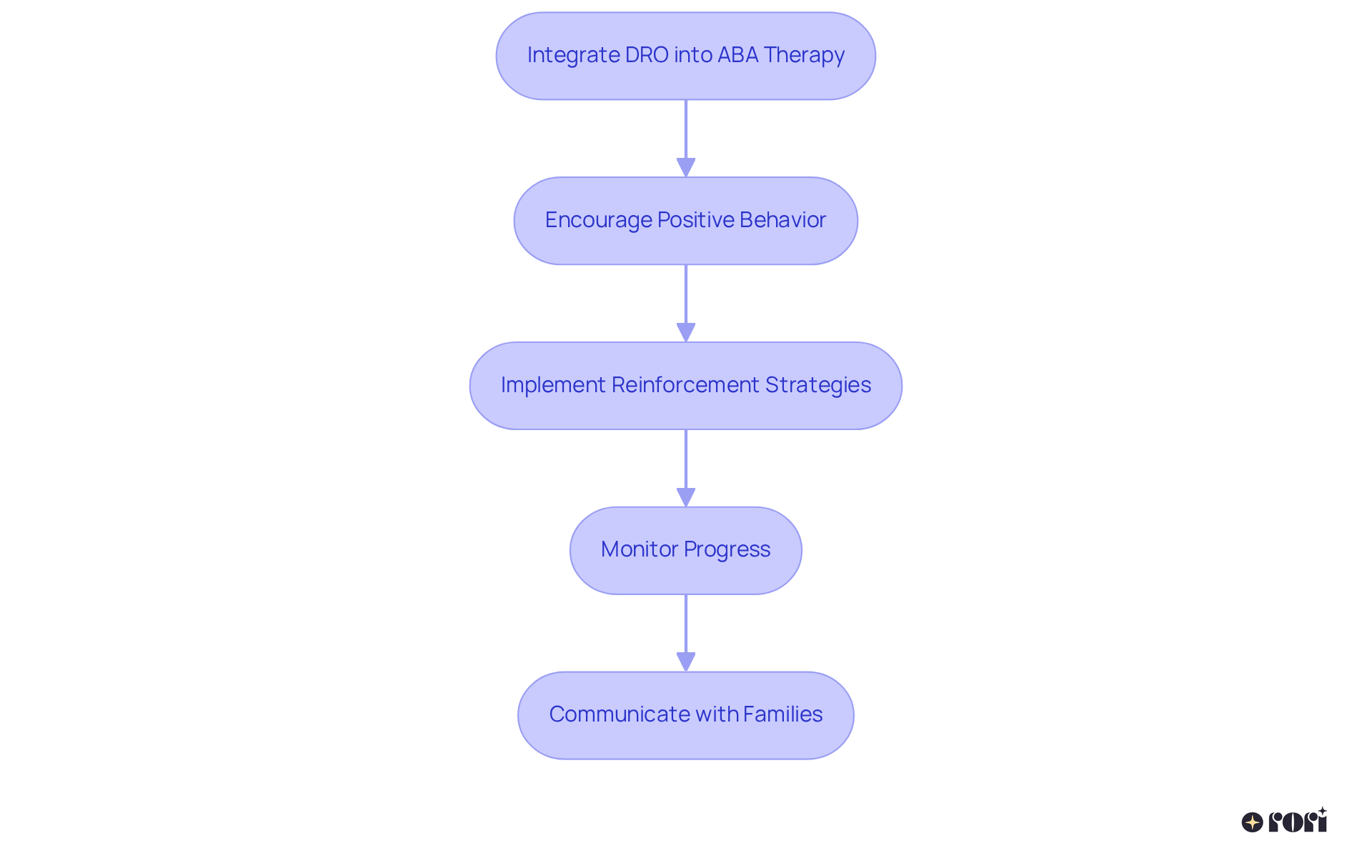
In a classroom, teachers can really make a difference using DRO examples ABA with Differential Reinforcement of Other Behavior. Imagine setting a timer for 10 minutes. During this time, if a student manages to avoid disruptive actions, they get a little positive reinforcement, like a kind word or a small treat. Research shows that using DRO examples ABA can help reduce challenging behaviors like aggression, self-injury, and tantrums, especially in kids with Autism Spectrum Disorders and ADHD. It not only helps students stay focused and engaged but also cuts down on disruptions.
For instance, a study with young people who have developmental disabilities found that tantrums decreased significantly when DRO examples ABA were used. Over time, consistently applying this strategy creates a more positive learning environment where both teachers and students can thrive. Plus, having skilled specialists to create personalized plans is key! They tailor interventions to meet each child's unique needs.
As Dr. Ross Greene wisely says, "Challenging actions arise when the expectations imposed on a young person exceed the abilities they possess to respond adaptively to those expectations." This highlights why using methods like DRO examples ABA is so important. It helps students build the skills they need for success, empowering caregivers with ABA principles to enhance their involvement in their children's behavioral goals.
To make this process even better, parents can have regular chats with teachers about their child's progress. Working together on strategies to boost positive behaviors at home can really make a difference. Let’s explore this together! We're here to help you every step of the way!
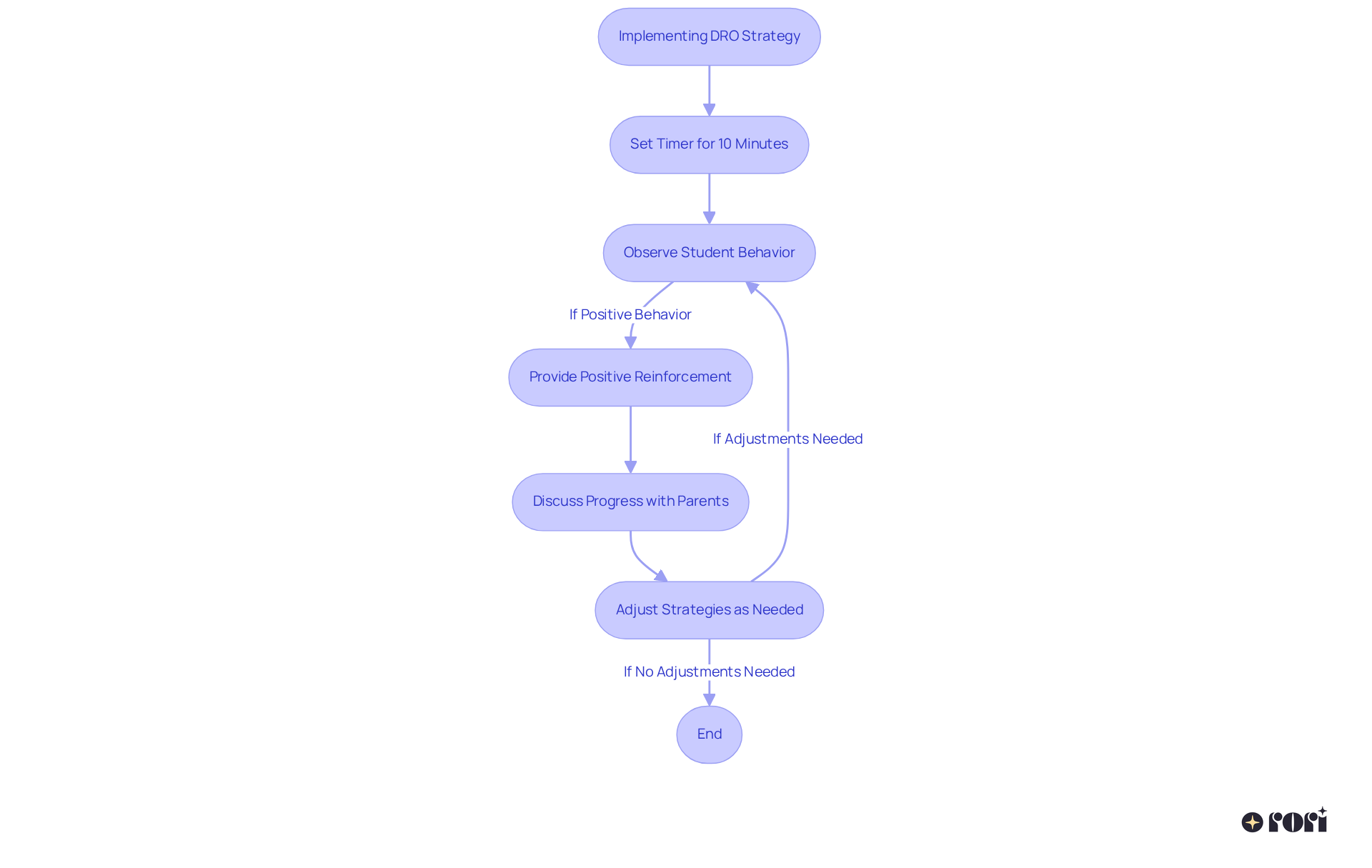
In group activities, facilitators can easily use dro examples aba to reward kids for every five minutes they interact positively with their peers. This means avoiding negative actions like interrupting or excluding others. Not only does this method strengthen positive social interactions, but it also offers dro examples aba that encourage kids to develop vital skills such as sharing, taking turns, and collaborating.
When we acknowledge positive behaviors, young individuals are more likely to build stronger social skills and improve their overall conduct. Generating opportunities for positive peer interactions is essential for enhancing youth's social competence and emotional understanding. This ultimately leads to healthier relationships and better classroom dynamics.
Moreover, caregiver education plays a key role in this process! By equipping caregivers with ABA principles and strategies, they can better support their children's development. This education enhances support, informs decision-making, and improves behavioral outcomes, empowering caregivers and reducing stress within family dynamics. Let’s explore this together!
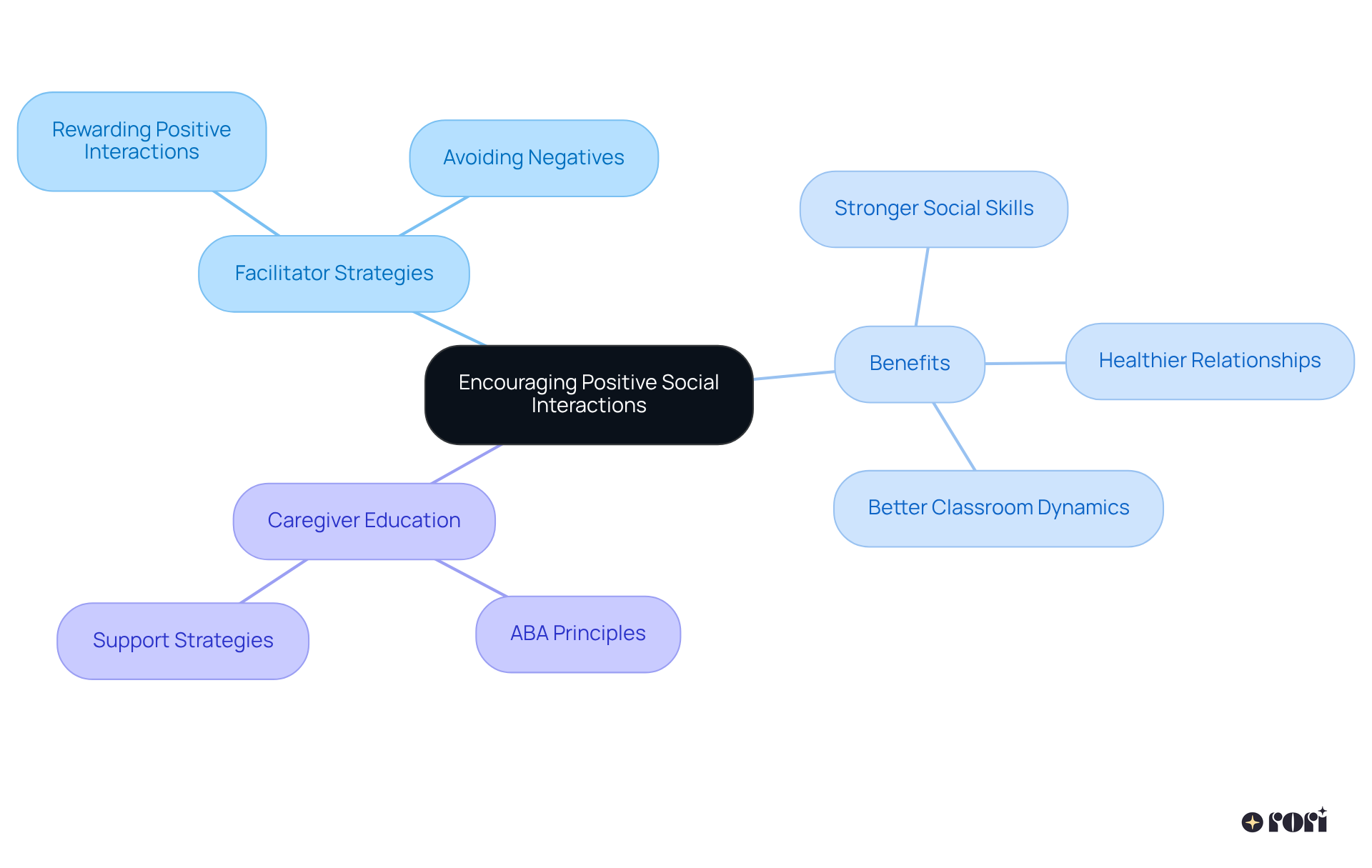
To enhance compliance, parents can effectively implement Differential Reinforcement of Other actions (DRO) by establishing specific intervals during which they encourage their kids to follow instructions. For example, if a young person successfully follows an instruction for 10 minutes without resistance, they receive a reward. This method not only strengthens compliance but also boosts the chances of it happening again in the future.
By consistently using this approach, parents can create an organized environment that promotes positive behavior and nurtures a sense of accomplishment in their kids. Incorporating key components of Rori Care's program, like measurable goals, helps parents set clear objectives for their children's compliance. This makes it easier to evaluate and adjust strategies based on their progress.
Additionally, using different types of positive reinforcement—such as verbal praise or tangible rewards—can motivate young individuals to follow adult guidance, making the learning experience both effective and enjoyable. Research shows that blending positive and negative reinforcement can significantly boost compliance rates, with some cases achieving up to 100% compliance. As Teresa Bahr highlights, positive reinforcement is a powerful tool for shaping desired behaviors in young people.
Establishing clear boundaries is crucial too; it helps kids understand expectations and creates a more effective learning atmosphere. By equipping caregivers with ABA concepts and techniques, they can actively support their children's behavioral goals through consistent participation and data gathering. Plus, the role of qualified behavior analysts in crafting personalized plans is essential. They ensure that strategies are tailored to meet each child's unique needs, ultimately enhancing the effectiveness of the intervention.
Let’s explore this together and see how these strategies can work for your family!
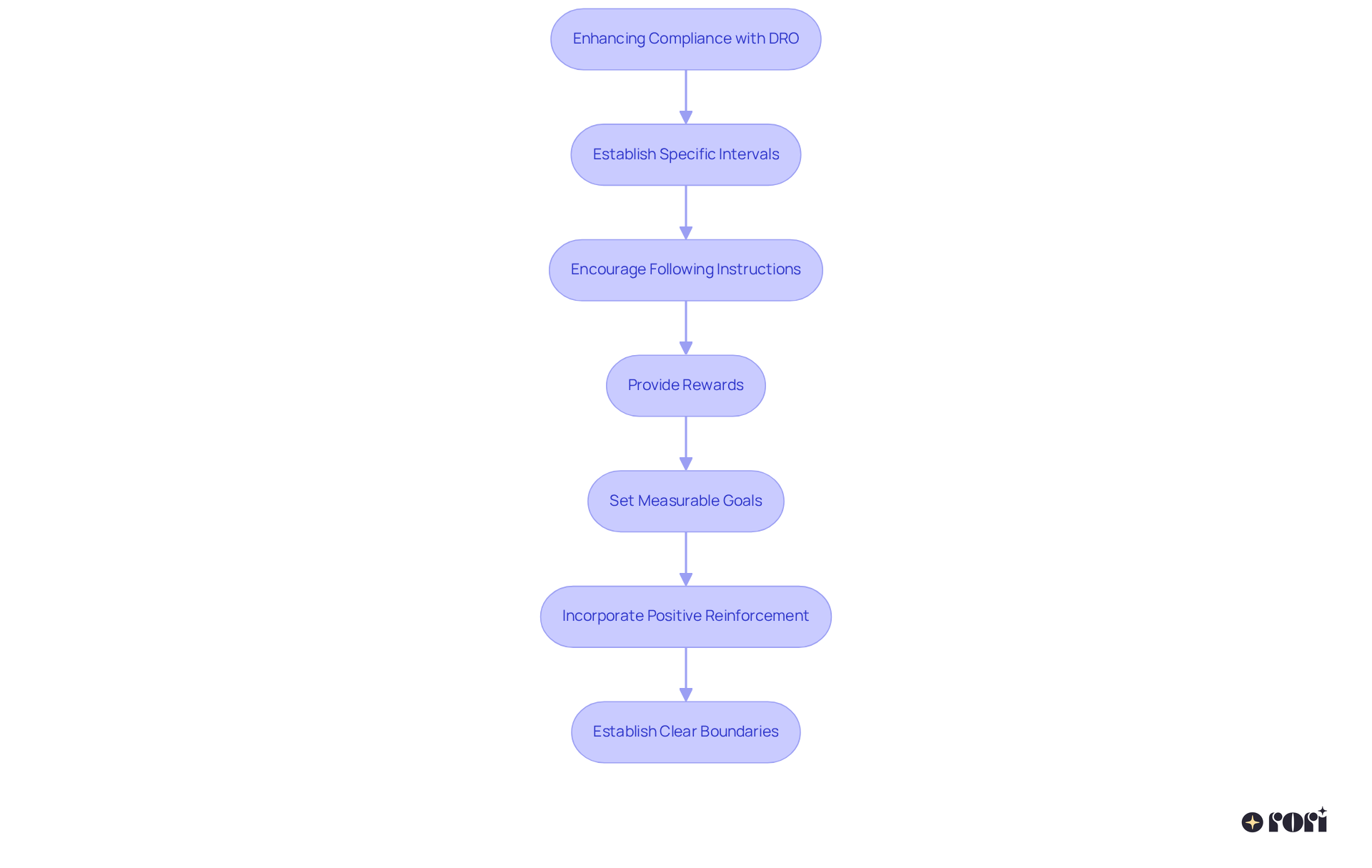
Transitions between activities can be challenging for both parents and kids. One effective way to navigate these moments is by using DRO examples ABA. This approach involves rewarding your little one for staying calm and composed for a set time—let's say five minutes. When they successfully transition without showing distress, they earn positive reinforcement. 🌟
This method not only helps kids regulate their emotions but also teaches them how to manage their feelings more effectively. Experts suggest that consistently applying DRO examples ABA during transitions can significantly enhance a child’s ability to cope with changes, nurturing resilience and emotional stability. By reinforcing those positive actions, you create a supportive atmosphere that promotes emotional growth and reduces anxiety around transitions. Let’s explore this together and see how it can make a difference in your family’s routine!
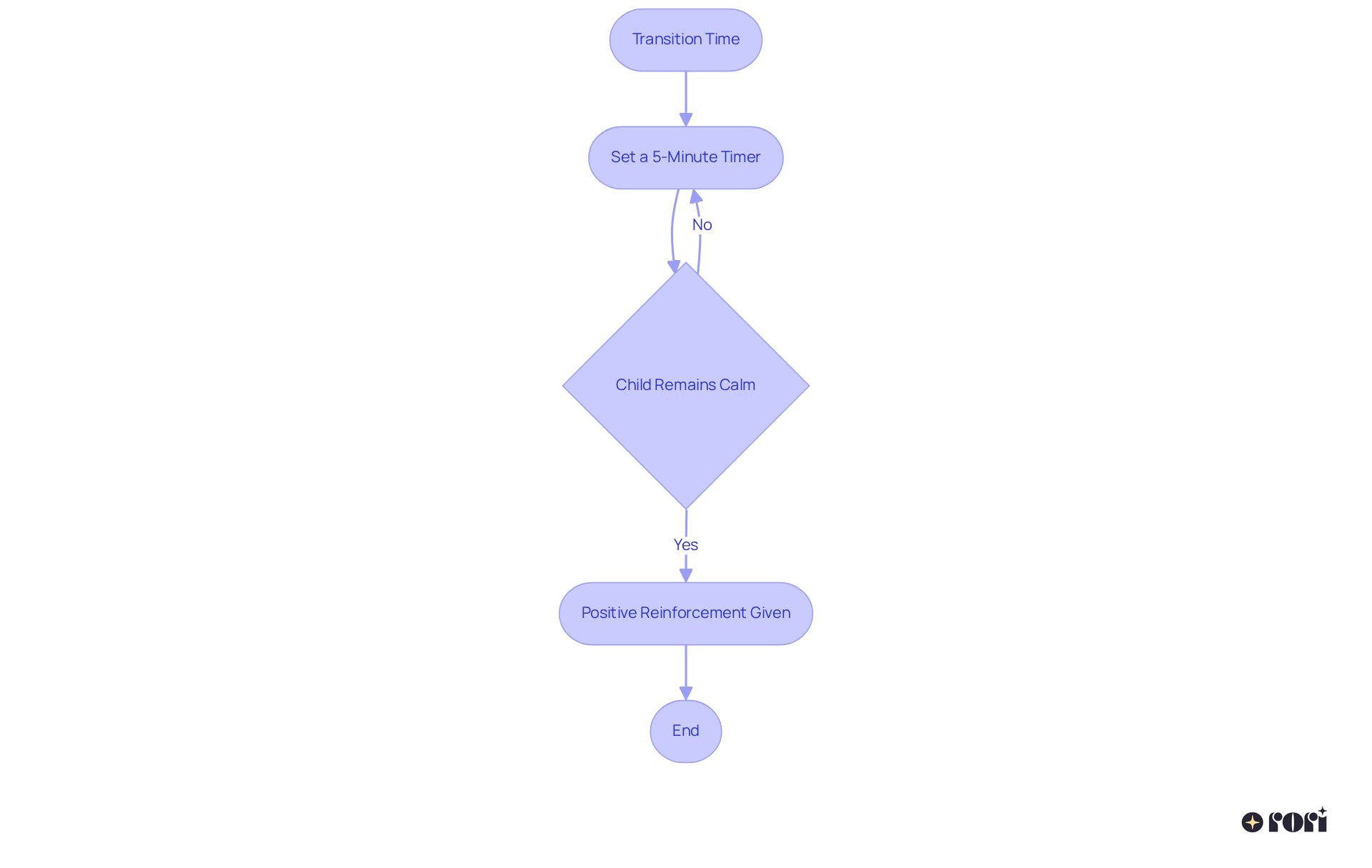
To promote suitable communication skills, caregivers can effectively use DRO examples ABA by rewarding youngsters for using verbal communication instead of relying on non-verbal signals or disruptive actions. For example, when a little one asks for help verbally rather than throwing a toy, they receive praise or a small reward. This positive reinforcement not only encourages them to express themselves verbally but also reduces the chances of disruptive behaviors.
Experts in the field highlight that these reinforcement methods significantly boost verbal communication abilities in individuals with autism, leading to better interactions and social involvement. Plus, social skills group therapy, led by a qualified therapist, can further enrich these interactions by providing a structured environment for youngsters to practice communication within a group, fostering improved skills and relationships.
Success stories are everywhere! Young individuals who consistently receive reinforcement for verbal communication show remarkable progress in expressing their needs and emotions effectively. By prioritizing verbal communication through DRO examples ABA and enhancing caregiver education, which supports informed decision-making, caregivers can create a nurturing environment that fosters the development of communication skills and overall behavioral improvement. Let’s explore this together and see how we can make a difference!
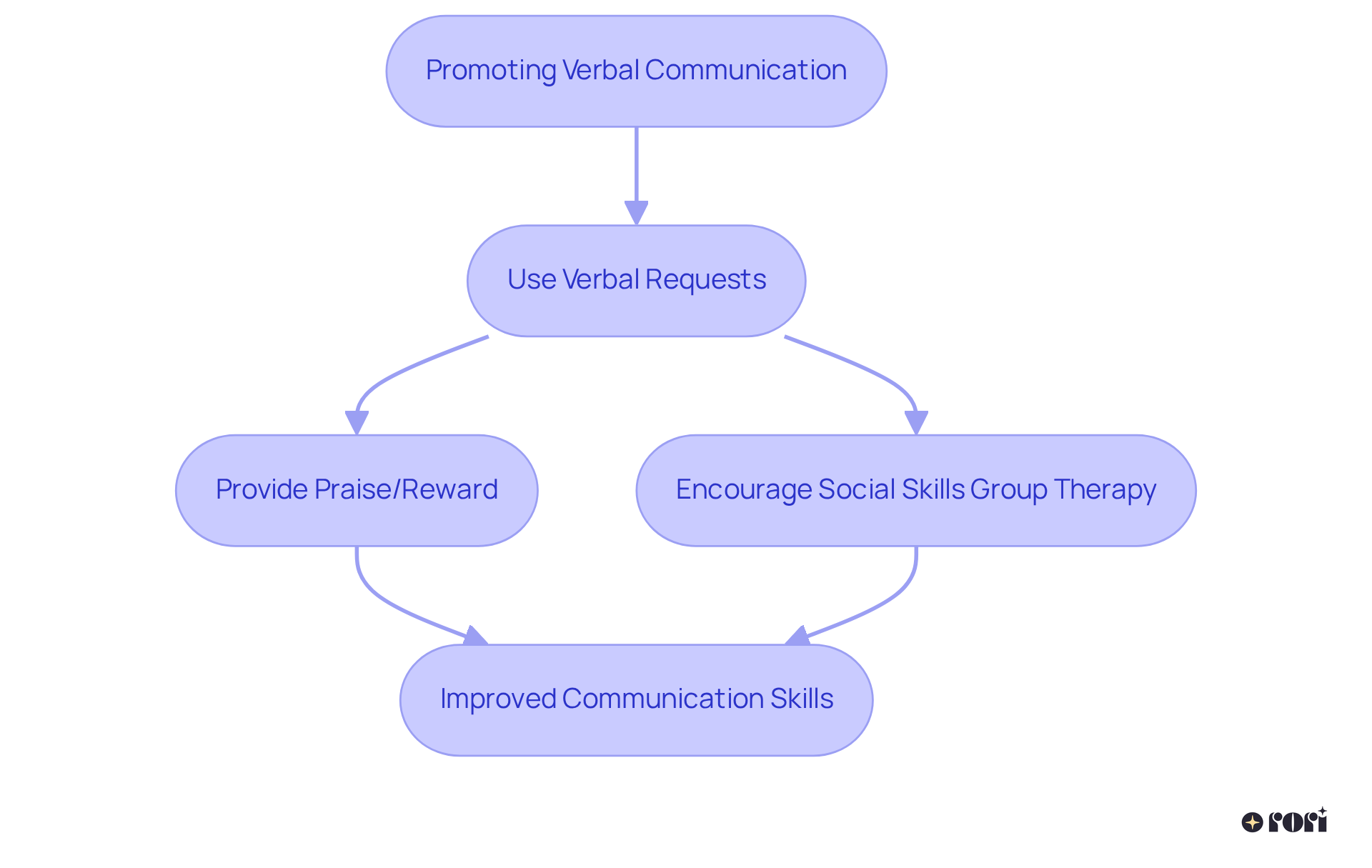
In therapy, clinicians can effectively use techniques like DRO examples ABA to help reduce self-injurious actions. By reinforcing the times when an individual refrains from self-harm, we create a positive atmosphere for growth. For example, if a young one successfully avoids self-injury for 15 minutes, they can be rewarded with something enjoyable, like a favorite activity or a bit of praise. This approach not only encourages them to steer clear of harmful actions but also fosters a sense of achievement and motivation, ultimately boosting their overall well-being.
At Rori Care - ABA Therapy, we’re dedicated to making ABA therapy accessible, effective, and empowering for all families. Our methods, including DRO examples ABA, are integrated into personalized treatment plans that address each child's unique needs. We set clear, measurable goals to track progress, emphasizing the crucial role skilled analysts play in crafting these tailored plans. It’s all about using evidence-based strategies to achieve the best outcomes.
We also understand that ongoing evaluation and adjustment of treatment plans based on progress reports are key. Caregiver involvement is vital in this journey! Parents can implement DRO examples ABA at home by setting short intervals for their kids to avoid self-injury and rewarding them for reaching these goals. This hands-on participation not only promotes positive behaviors in a nurturing environment but also helps caregivers grasp ABA principles better, empowering them to make informed decisions that positively impact their child’s journey.
Let’s explore this together! We’re here to help you every step of the way!
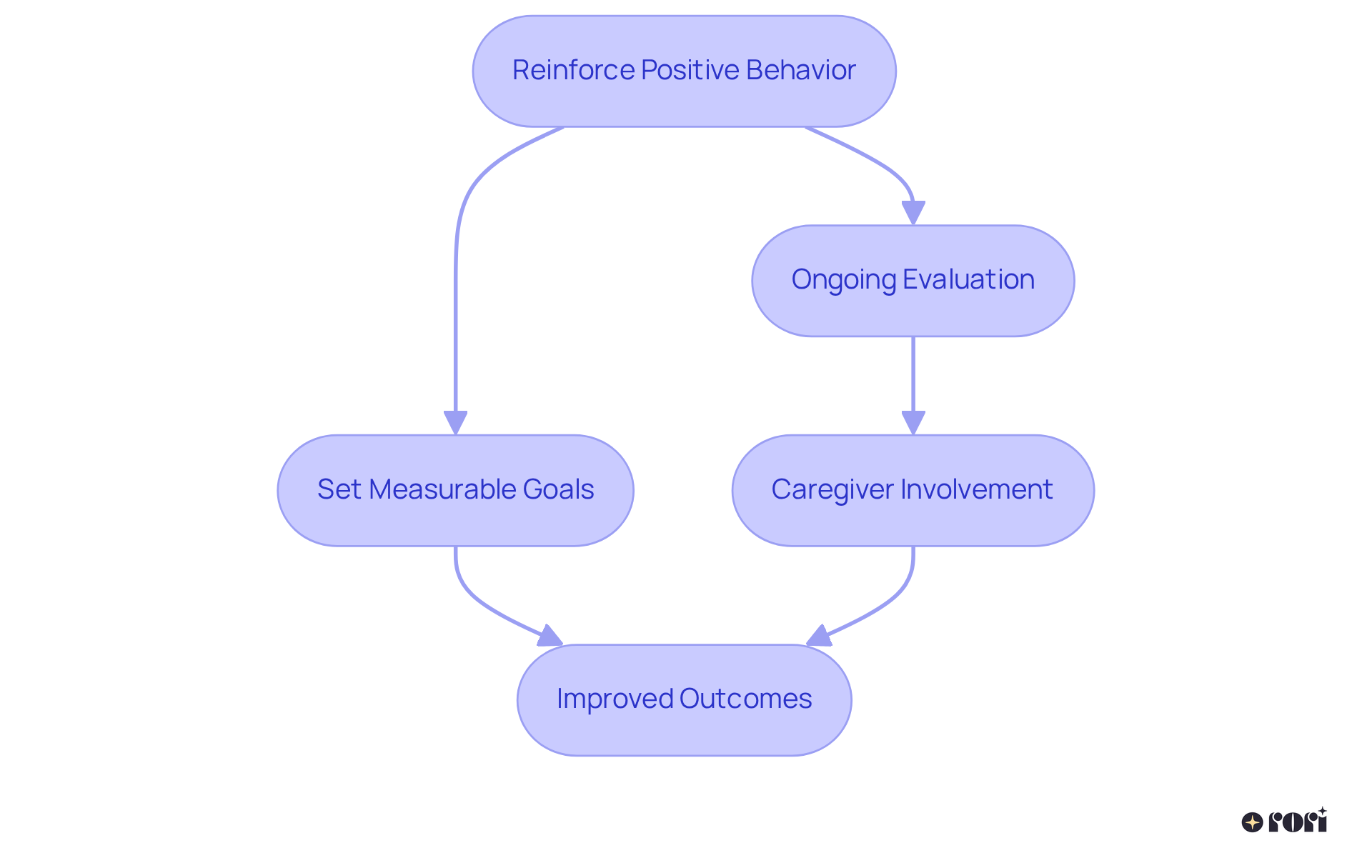
To foster independence, parents can effectively use Differential Reinforcement of Other behavior (DRO) by rewarding kids for completing daily living tasks on their own, like dressing themselves or preparing a snack. For example, if a child successfully dresses independently without help for an entire week, they earn a fun reward! 🎉 This approach not only reinforces their ability to perform tasks independently but also boosts their confidence in managing daily activities.
Research shows that positive reinforcement significantly improves the chances of skill retention and mastery, making it a crucial strategy for promoting self-sufficiency in kids with autism. According to Rori Care - ABA Therapy, teaching daily living skills is essential for fostering independence and enhancing self-care capabilities. A certified behavior analyst creates personalized plans that include measurable goals and research-supported methods, ensuring that interventions are tailored to each child’s unique needs.
Plus, organized interventions have shown remarkable improvements in daily living skills among teenagers with ASD, highlighting the effectiveness of approaches such as dro examples aba. By consistently using DRO strategies and involving caregivers in the process, parents can nurture essential daily living skills, ultimately leading to greater independence and a better quality of life for their children. Let’s explore this together! We’re here to help you every step of the way!
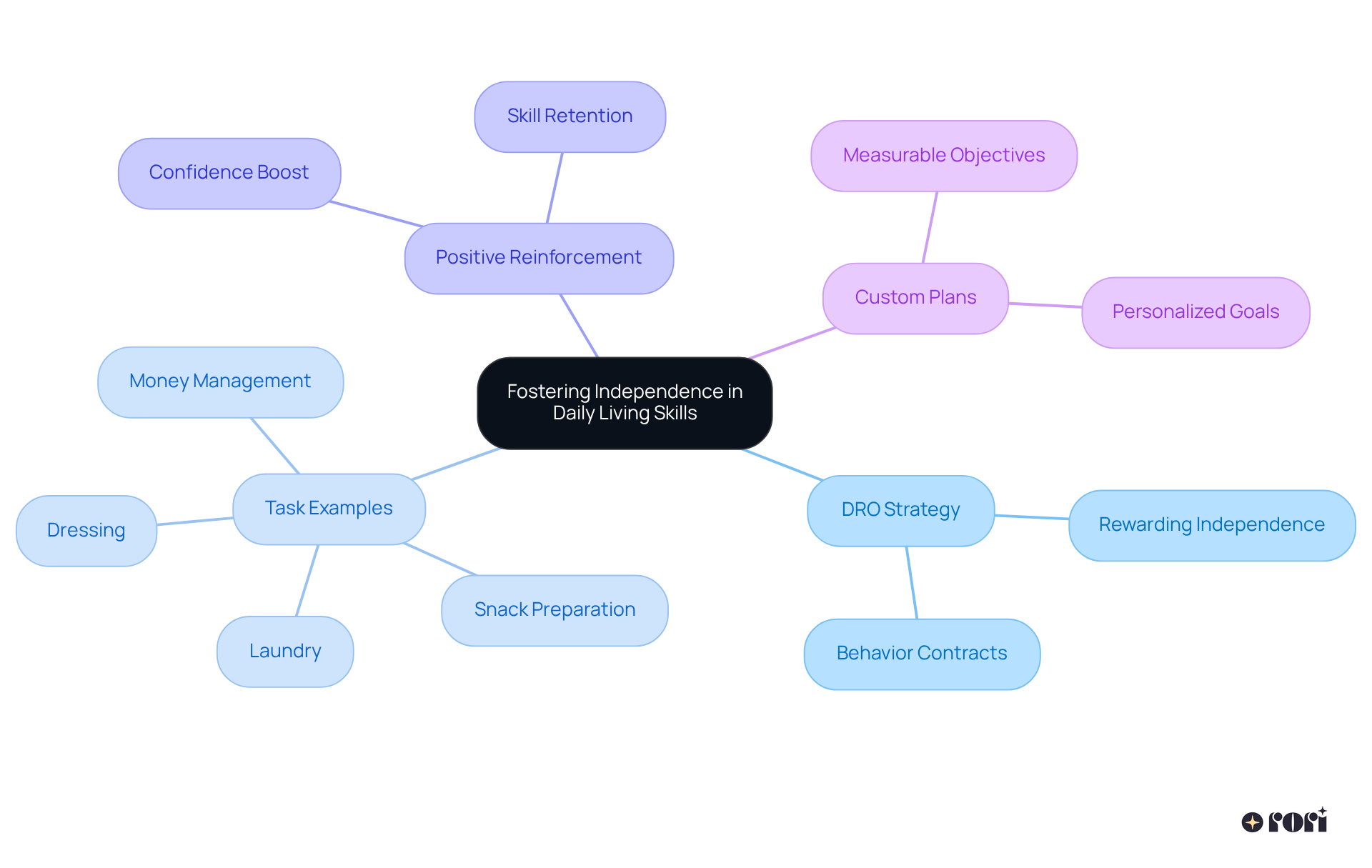
To help kids improve their attention span, educators can try using DRO, which rewards students for staying focused during lessons. For instance, if a student manages to concentrate for just 10 minutes, they get a small reward. This little boost encourages them to pay attention for longer periods, ultimately leading to better learning outcomes.
This approach is especially helpful for children with Autism Spectrum Disorders, ADHD, and learning disabilities. It uses evidence-based techniques tailored to each child's unique needs. By creating individualized plans and setting measurable goals, educators can effectively support the development of essential skills. This fosters a nurturing environment where learning and growth can truly thrive. Let’s explore this together and see how we can make a difference!
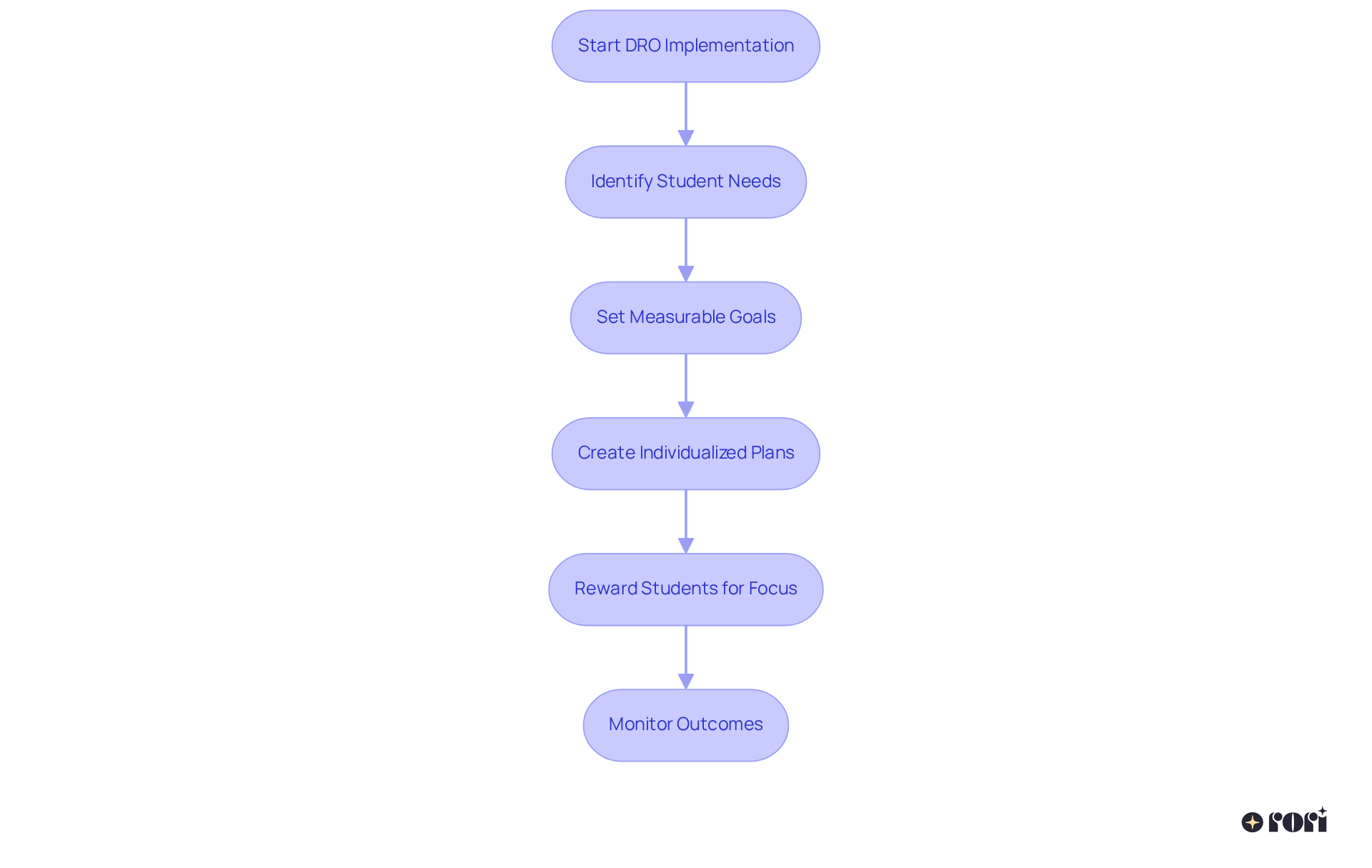
The use of DRO examples aba strategies in ABA therapy has significantly improved the lives of young individuals. By focusing on reinforcing the absence of unwanted behaviors during specific time frames, children are encouraged to embrace more appropriate responses. This approach not only boosts social interactions and helps with emotional regulation but also fosters greater independence.
Research shows that kids who use DRO strategies often see significant improvements in positive behaviors, which can really enhance their quality of life. For instance, studies have found that when children receive praise for not engaging in challenging behaviors, they’re more likely to develop adaptive skills and create supportive environments that nurture their growth.
Additionally, using automated data collection techniques allows clinical teams to focus more on treatment rather than paperwork, increasing therapy efficiency and giving 50% more time for youth treatment. This newfound efficiency empowers caregivers with timely insights into their child’s progress.
The transformative potential of dro examples aba highlights their crucial role in effective ABA therapy, leading to better behavioral outcomes and improved well-being for children. Let’s explore this together and see how these strategies can make a positive impact in your child’s life!
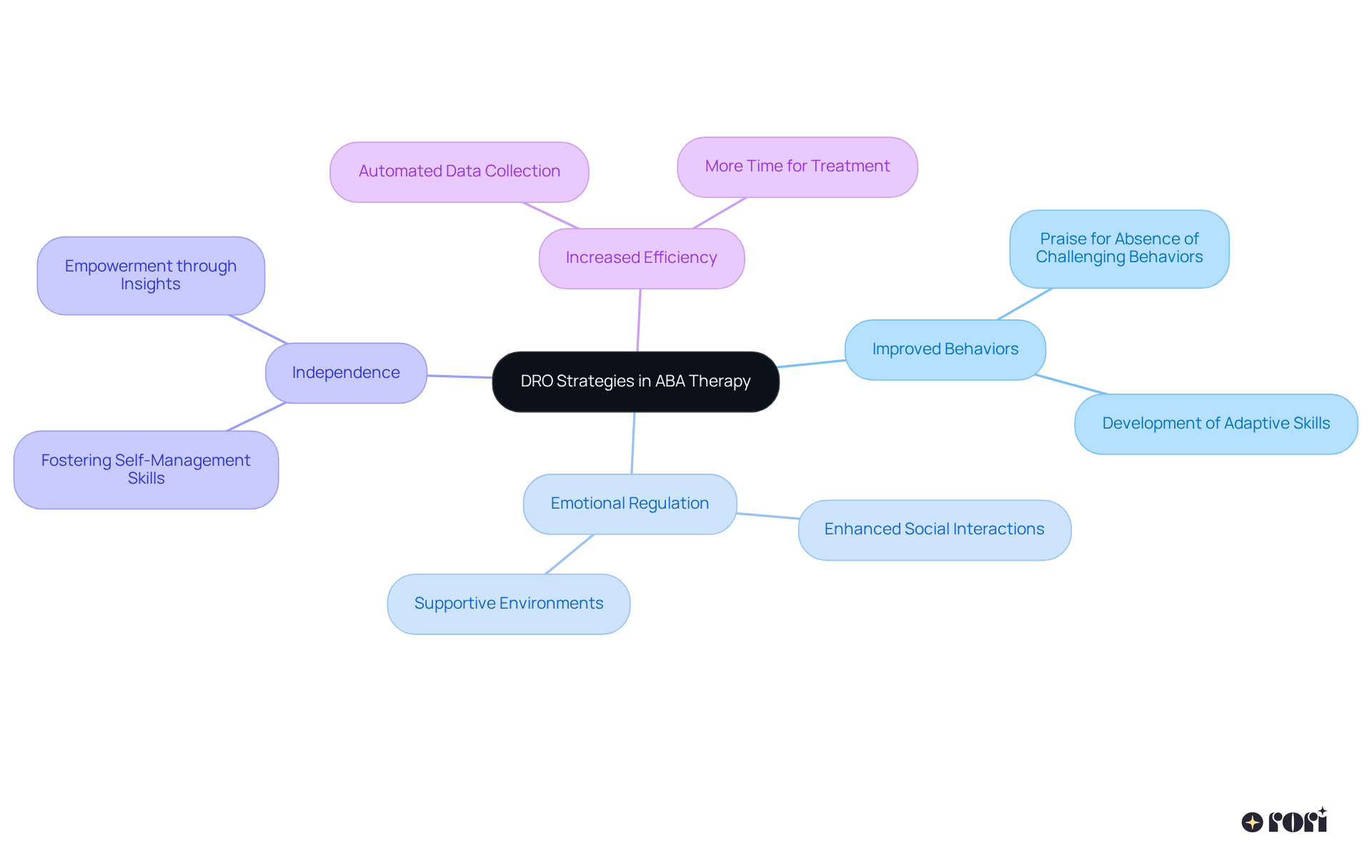
The integration of Differential Reinforcement of Other behavior (DRO) within ABA therapy is truly a game changer for transforming child behavior. By focusing on rewarding the absence of negative actions during specific time frames, this method encourages children to engage in positive behaviors. Ultimately, it helps foster their development and emotional well-being. At Rori Care, our commitment to implementing DRO strategies highlights the potential to create nurturing environments where children can truly thrive.
Throughout this article, you’ll find various examples that illustrate the effectiveness of DRO in different settings, like classrooms and home environments. From reducing disruptive behaviors and enhancing social interactions to promoting compliance and emotional regulation, each case shows the significant improvements that can be achieved through consistent application of DRO techniques. Plus, the emphasis on collaboration between caregivers and professionals strengthens the support system, ensuring that interventions are tailored to meet the unique needs of each child.
As the evidence suggests, the impact of DRO strategies goes beyond just immediate behavior modification; it cultivates essential life skills and emotional resilience. By empowering caregivers with the knowledge and tools to implement these strategies effectively, families can play a crucial role in their children’s success. Embracing DRO not only enhances individual growth but also enriches the overall quality of life for children. So, let’s embark on this journey towards positive change together! Explore how these transformative strategies can make a lasting difference in the lives of children and their families. We’re here to help you every step of the way!
What is DRO in the context of ABA Therapy?
DRO, or Differential Reinforcement of Other Behavior, is an ABA Therapy technique that encourages children to avoid negative behaviors during specific time frames while promoting positive activities.
How does Rori Care implement DRO?
Rori Care integrates DRO by providing positive reinforcement to children for avoiding negative behaviors, such as praising them for staying quiet during reading time, which helps reinforce their focus and engagement.
What are the benefits of using DRO?
DRO helps reduce challenging behaviors, nurtures emotional regulation and coping skills, and improves social interactions and learning outcomes in children, particularly those with autism.
Can you provide an example of DRO in a classroom setting?
In a classroom, a teacher might set a timer for 10 minutes. If a student avoids disruptive behaviors during that time, they receive positive reinforcement, such as a kind word or a small treat, which helps create a more positive learning environment.
How does DRO impact children with Autism Spectrum Disorders and ADHD?
Research indicates that using DRO can significantly reduce challenging behaviors like aggression, self-injury, and tantrums in children with Autism Spectrum Disorders and ADHD, helping them stay focused and engaged in the classroom.
What role do caregivers play in the effectiveness of DRO?
Ongoing communication with families and caregivers is essential for the success of DRO strategies. Educating caregivers on ABA principles equips them to support their children effectively at home, reinforcing professional interventions.
How often should caregivers communicate with teachers about their child's progress?
Regular discussions between caregivers and teachers about a child's progress can enhance the effectiveness of strategies aimed at boosting positive behaviors at home and in school.
What skills do children develop through the use of DRO in group activities?
In group activities, children can develop vital skills such as sharing, taking turns, and collaborating by receiving rewards for positive interactions with their peers while avoiding negative actions like interrupting or excluding others.
What is the overall goal of implementing DRO at Rori Care?
The overall goal is to enhance the quality of life for children with autism by tracking clear, measurable goals and fostering positive behavioral changes through tailored interventions.